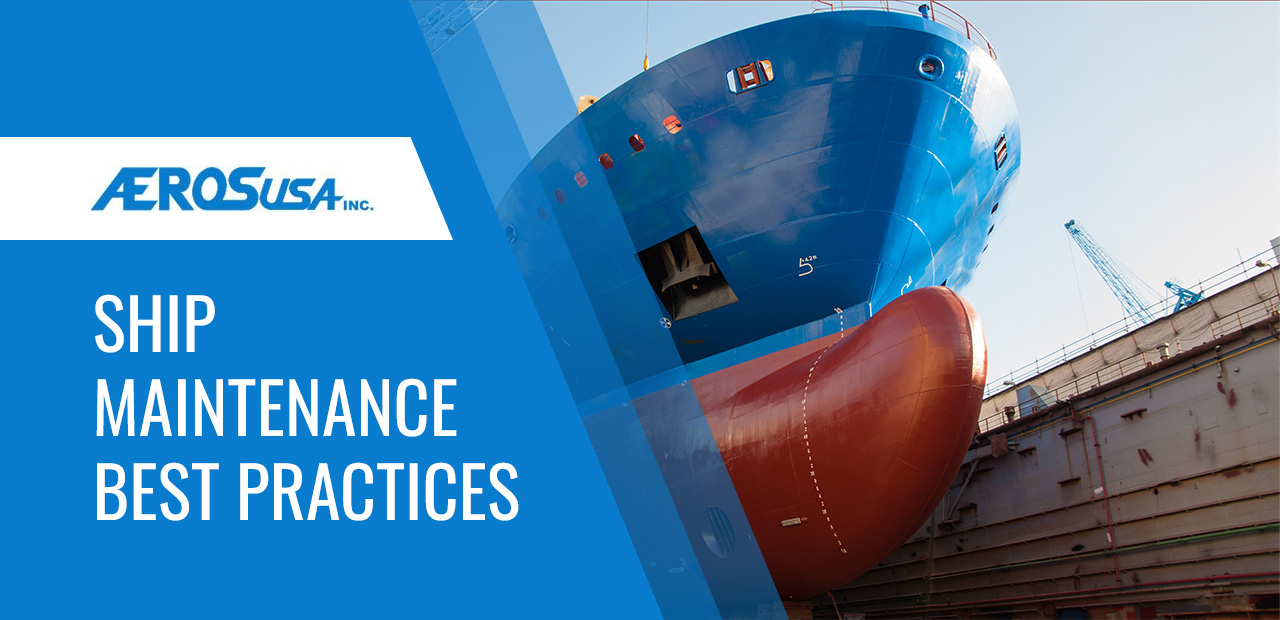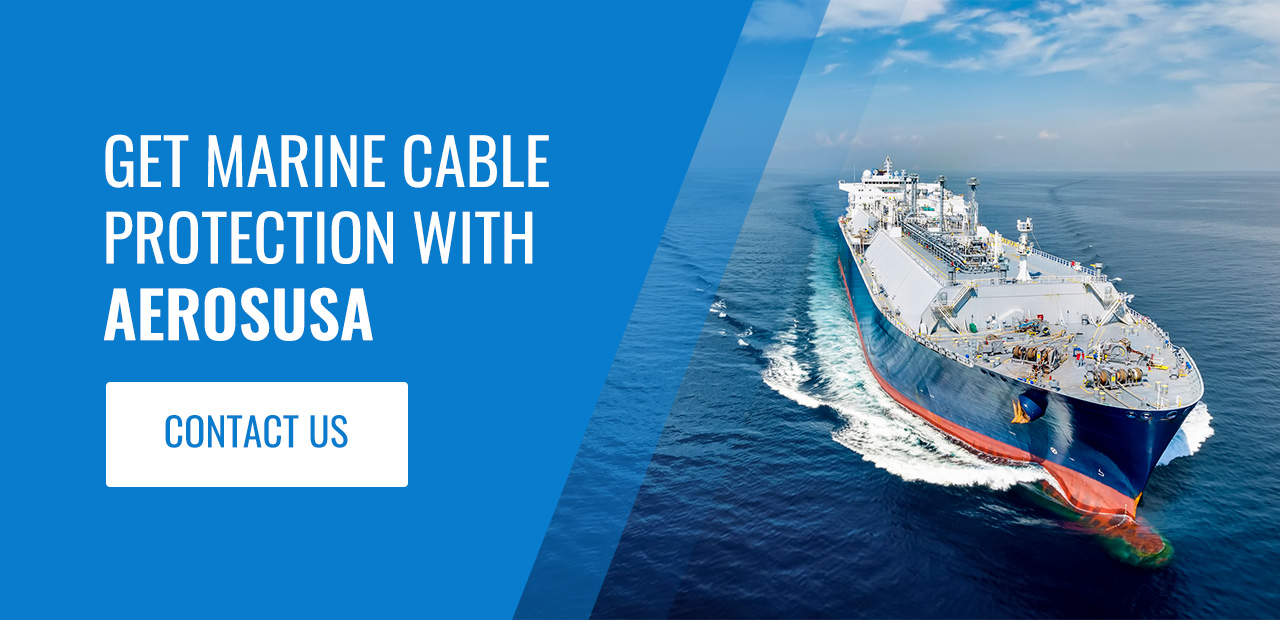
Ship maintenance is a planned process that involves activities related to caring for a ship to support its performance. These activities range from regular inspection of the vessel’s systems to carrying out repairs and routine tasks that keep the ship in good working condition. Ship and vessel maintenance often happens at a dry dock or in-port.
By implementing proper maintenance, ship operators and owners can remain compliant with local and international regulations while ensuring their vessels are safe, reliable and seaworthy.
Table of Contents
Importance of Ship Maintenance
Ships are critical in today’s maritime industry as they are the backbone of the global economy. These vessels carry goods and people across vast expanses of water, which makes keeping them in great condition vital. Below are additional reasons for ship maintenance matters.
1. Crew and Passenger Safety
Performing regular upkeep, which involves inspecting and addressing wear and malfunctions, keeps the ship in top working condition. It allows technicians to identify and resolve potential issues that could increase the risk of accidents, injuries and fatalities. As a result, maintenance reduces risks, ensuring crew and passenger safety while on board.
2. Regulatory Compliance
Like vehicles, maritime vessels must comply with local and international regulations regarding safety, technologies on board and environmental protection. Proactive maintenance helps vessels comply with seaworthy regulations and safety standards. It also resolves issues and upgrades technologies that violate environmental protection standards.
3. Improved Efficiency
Proper ship repair and maintenance resolve issues that, left unattended, will impair performance. Ensuring that the vessel’s systems are working minimizes the risks of failures, which leads to reduced downtime and fewer repairs. A ship in good condition will consume the right fuel volume, keep up with timelines and lower operational costs due to fewer incidences.
4. Vessel Life Service
Besides improving performance, maintenance extends a ship’s life span. Operators minimize the risks of breakdowns due to malfunctions by inspecting and rectifying issues early. Activities like system checks, oil changes, lubrication and component replacements reduce complications, contributing to longer and more profitable service life.
5. Environmental Footprint
With the growing support for environmental protection, more consumers prioritize sustainability, leading to eco-friendly transitions across all industries. The shipping industry is directly connected to ocean pollution because of spillages, emissions and waste discharge. Ship maintenance can help protect the marine environment and promote the fleet as eco-conscious.
Types of Ship Maintenance

Ship maintenance practices are divided into distinct categories to ensure a well-rounded approach. These categories usually include preventive, corrective and condition-based maintenance. Here’s an overview of each:
- Preventive maintenance: These maintenance practices are based on a predetermined schedule and occur whether the ship is in good condition or not. The aim is to catch potential problems before they become serious and to prevent them from arising in the first place through inspections, repairs and replacements. Today, companies are investing in advanced technologies to strengthen their preventive maintenance strategies using predictive analytics.
- Corrective maintenance: Also called reactive maintenance, this approach involves taking action once something happens, like a system failure or broken component. While it should never be your sole maintenance strategy, it is necessary if an issue arises.
- Condition-based maintenance: This approach combines preventive and predictive strategies. It involves monitoring and analytics using technologies that provide real-time information about the vessel’s status and its components. Technicians use that information to service the vessel. Like corrective maintenance, condition-based maintenance is more concise and eliminates unnecessary work.
Ship Maintenance Best Practices
Proper ship maintenance is necessary because it promotes safety, functionality, and longevity. A ship maintenance checklist details these practices to ensure the vessel remains in good working condition. Here are key elements of ship maintenance and best practices to consider:
Hull Inspection
The hull and other structures around the ship require routine inspection and maintenance for signs of wear, like cracks, dents and corrosion. Look out for common structural weaknesses, like the following:
- Plating deformations
- Corroded gangways, ladders and platforms
- Cracked deck beams
- Damaged hatches
In addition, check the condition of the paint and other protective coatings. Servicing includes cleaning, applying antifouling agents and clearing corrosion.
Engine and Machines
Inspect the engine and other critical machines responsible for optimal performance, like generators and auxiliary systems. Follow component manufacturer guidelines regarding repairs and replacements. Servicing involves checking fuel levels, lubricating moving parts, inspecting cooling and exhaust systems and verifying the proper function of propulsion and stabilizers.
Electrical Systems
Electrical systems need regular checks to prevent power disruptions, leaks and malfunctions. Inspect batteries, connections and cables to ensure optimal power transmission.
Confirm that wires and cables are in good condition and enclose exposed cables to promote safety and performance. Test the operation of navigation, lighting and communication systems to confirm adequate power supply.
Safety Equipment
Inspect safety equipment to maintain readiness during emergencies and compliance with safety standards. Check the condition of lifeboats, floatation devices and other lifesaving equipment. Verify that firefighting appliances like pumps and extinguishers work. Test emergency systems like alarms and the two-way VHF radiotelephone sets. Identify and resolve potential issues in these devices, especially structural defects.
Navigation Equipment
Inspect and fix navigation equipment to ensure vessel safety, accuracy and performance. Check radar systems for signal strength, clarity and proper calibration. Other navigation tools and systems to inspect and test include the following:
- Global Positioning System (GPS)
- Global Navigation Satellite System (GNSS)
- Depth finder
- Electronic chart displays
- Compasses
Vessel Cable Protection
Maritime vessels rely on cables for the engine and communication lines. Ship maintenance tips often exclude vessel cable protection, a critical aspect of safety and equipment protection. The harsh marine and offshore environments can damage cables and wiring due to various factors, such as salt water, corrosive substances, moisture, UV rays, fires and more.
Consequently, exposed wires and cables must be protected using the latest shielding materials designed for high-risk and demanding environments. Cable protection applications for ships include shipboard compartments, cargo holds, open decks, hydraulics, electrical raceways and more.
Marine cable protection offers solutions like:
- Conduits: These are light, flexible and easy to fit. They come in different materials, from plastic and metal to polyamide and specialty polymers.
- Fittings: These are robust devices designed to provide secure connections with conduits. They are often made from metal, polyamide and plastic.
- Braids and sleeves: These high-performance devices safeguard wires and cables against corrosive substances like chemicals, oils and salt water. They also protect against abrasion, high temperatures and electromagnetic waves.
- Cable glands: These entry devices offer secure connections by attaching the end of cables to pieces of equipment.
Get Marine Cable Protection With AerosUSA
Following the best practices for ship maintenance allows owners and operators to keep the vessels safe, efficient and compliant. Ensure quality and durability by working with reputable part providers. Trust AerosUSA, a leading provider of cable protection products for multiple industries. We offer innovative and cutting-edge protective marine and offshore products from top manufacturers to ensure reliability and longevity.
Contact our experts to discuss your vessel cable protection needs!


